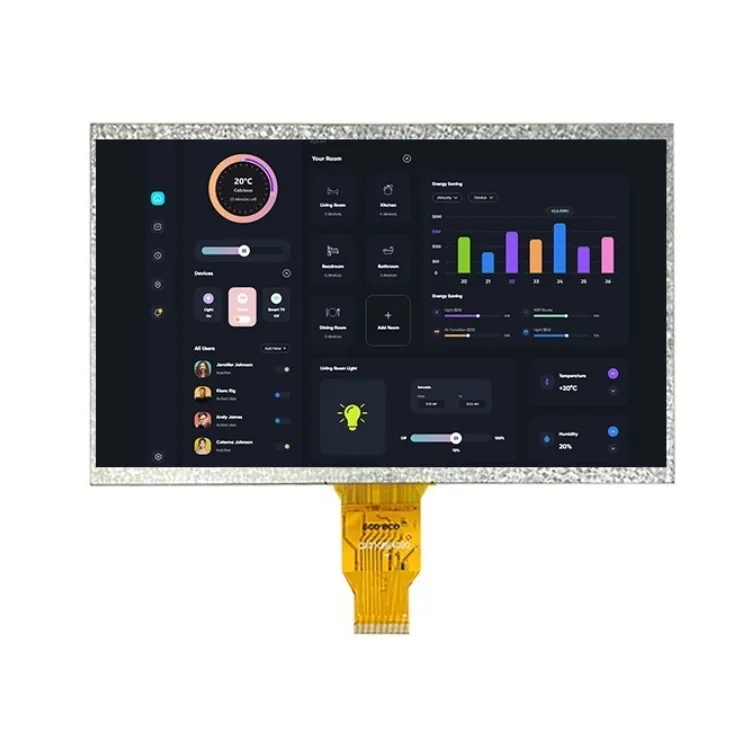TFT LCD vs. OLED and LED: Choosing the Right Display Technology
2024-11-20
Display technology has advanced dramatically, offering various options for different applications. Among the leading technologies are TFT LCD, OLED, and LED displays, each with unique characteristics. This blog explores how a TFT LCD module stands out from other display technologies like OLED and LED.
A Closer Look at TFT LCD Technology
A TFT LCD module operates by manipulating liquid crystals to control the passage of light from a backlight. The integration of thin-film transistors for each pixel ensures sharper images and better color accuracy than standard LCDs.
Key Differences: TFT LCD vs. OLED vs. LED
1. Display Technology
- TFT LCD: Relies on liquid crystals and a backlight, with transistors providing pixel control.
- OLED: Uses organic compounds that emit light when electrified, offering self-illuminating pixels.
- LED: Utilizes light-emitting diodes as backlights for traditional LCD panels.
2. Image Quality
- TFT LCD: Provides excellent sharpness and resolution but struggles with deep blacks and vibrant colors due to the backlight.
- OLED: Offers unmatched contrast, deep blacks, and vibrant colors by individually controlling pixel brightness.
- LED: Enhances brightness and color reproduction but falls short of OLED’s precision.
3. Brightness and Viewing Angles
- TFT LCD: Performs well in bright environments but has limited viewing angles compared to OLED.
- OLED: Superior in viewing angles and maintains consistent quality across all lighting conditions.
- LED: High brightness levels make it ideal for outdoor and large-screen applications.
4. Flexibility and Weight
- TFT LCD: Rigid and heavier due to the layered structure with a backlight.
- OLED: Flexible, enabling the creation of foldable devices and curved screens.
- LED: Compact but lacks the flexibility of OLED.
5. Cost
- TFT LCD: Most affordable option, making it ideal for budget-conscious applications.
- OLED: Expensive due to its advanced technology and premium image quality.
- LED: More costly than TFT LCD but cheaper than OLED for large displays.
Which Technology Should You Choose?
- For General Applications: TFT LCD is ideal for monitors, automotive dashboards, and industrial equipment.
- For Premium Visuals: OLED excels in devices requiring superior image quality, like high-end TVs and smartphones.
- For Outdoor Displays: LED is best for digital signage and applications requiring high brightness.
Future of Display Technologies
While TFT LCD modules remain a popular choice due to their affordability and reliability, OLED’s innovations in flexibility and image quality are driving its adoption in high-end devices. LED displays continue to dominate in scenarios demanding brightness and energy efficiency. Emerging hybrid technologies may further blur the lines between these options in the future.
Understanding the differences between TFT LCD, OLED, and LED technologies is crucial for selecting the right display for your application. TFT LCD modules strike a balance between cost and performance, making them a versatile choice for diverse industries. Meanwhile, OLED and LED continue to push the boundaries of display innovation, catering to niche demands.



